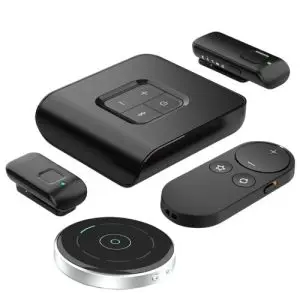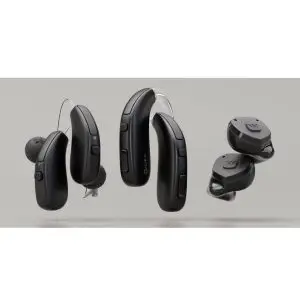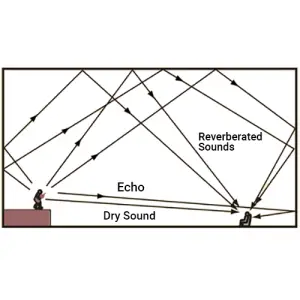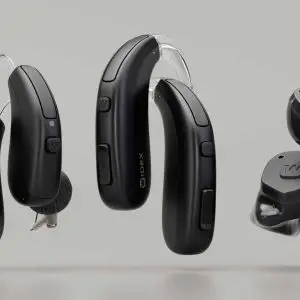Sensors in hearing products & consumer hearing devices; what they collect and how it’s used
Snapshot
- Hearing products commonly combine microphones (beamforming/noise reduction), IMUs (head-motion, gestures, fall-risk), and increasingly in-ear PPG (HR/HRV/SpO₂/respiration). Ear-canal PPG can be more stable than wrist sites due to less ambient light and temperature interference. (MDPI, Nature)
- Datalogging in modern hearing aids records hours of use, volume/program changes, and environment summaries. Clinicians use it for counseling, troubleshooting, and fine-tuning, and are asking for richer context like non-use alerts and automated malfunction diagnostics. (AudiologyOnline, Research Explorer)
- Environmental classification (ML models that categorize scenes like speech-in-noise/quiet/traffic) now drives automatic program switching and front-end speech enhancement. (MDPI, ScienceDirect, ResearchGate)
- Across IoT/consumer devices, heterogeneous sensors (audio, vision, motion, proximity, location, temp/pressure, biometrics) feed edge-AI pipelines. The trend is toward on-device inference to save power, lower latency, and reduce data export. Neuromorphic, event-driven chips are an emerging option for always-on, ultra-low-power sensing. (IEEE Internet of Things Journal, IoT Analytics, Tom’s Guide)
- Privacy & governance: research urges privacy-preserving learning and explicit safeguards (especially for audio-visual streams). HIPAA/GDPR frameworks apply when data are identifiable. Consumer tracker analyses show extensive third-party sharing, underscoring the need for transparent disclosures and local processing. (ScienceDirect, ISCA Archive, Infant Hearing, IAPP, News.com.au)
A few concrete examples
- In-ear sensing: Reviews and experiments demonstrate reliable cardiorespiratory metrics from the ear canal (HR/HRV/SpO₂/respiration) with appropriate denoising and low-power designs. (MDPI, Nature, ENT and Audiology News)
- IMU-enabled features: In-ear IMUs support head-motion tracking and proximity beacons. Recent clinical work evaluates AI fall-risk scoring from IMU-equipped hearing aids against human observers. (Computer Laboratory, Starkey Learning Hub)
Oticon Intent Technology: What the “4D Sensor” is (the 4 inputs)
Oticon’s 4D Sensor fuses four continuous inputs to infer the listener’s intent and dynamically set support levels in the MoreSound Intelligence (MSI 3.0) pipeline:
- Head movement — from an on-board accelerometer (X/Y/Z). Turns and nods signal conversation engagement; minimal head motion suggests focused, intimate listening.
- Body movement — also from the accelerometer; Z-axis motion (walking/running) implies the user needs broader situational awareness.
- Conversation activity — an acoustic analysis that detects if people are actively talking around the wearer.
- Acoustic environment — scene complexity, level, and SNR from the mic array.
These four sensor “dimensions” are combined to produce a single control signal that steers downstream processing (e.g., Intent-based Spatial Balancer and DNN 2.0), effectively choosing between an “Easy” vs “Difficult” path and how much help to apply within a personalized range set in Genie 2.
How this helps Oticon’s AI classification
- The sensor fusion output acts like a high-level prior for the classifier. If you’re moving and scanning (e.g., navigating a room), the system biases toward wider awareness. If you’re still and facing one talker, it biases toward more contrast for that talker. Oticon reports up to a 5 dB span of additional adaptation within the same sound scene when intent sensing is active, compared with a fixed policy based on acoustics alone.
- The intent signal conditions both the spatial balancer (handles distinct sources) and the DNN 2.0 (handles diffuse noise), improving the “support matching” to what the user is trying to do in that moment.
What’s actually been shown (evidence)
Oticon-run studies (technical + clinical):
- Technical evaluations (whitepaper): +35% access to speech cues vs Oticon Real; +1.5 dB output SNR from Sirius/DNN2 plus up to +5 dB more with 4D Sensor active; and a documented 5-dB span of adaptation tied to intent.
- Clinical evidence whitepaper (N≈30, EEG + VR tasks): 4D Sensor improved speech comprehension ~15% in a complex “cocktail party” paradigm and showed intent-contingent brain attention patterns (EEG).
- Research brief (VR + biometrics): −22–31% sustained listening effort (pupillometry) and −40% listening stress (heart rate) vs Oticon Real, with similar speech comprehension—suggesting lower cognitive load.
Independent context (not brand-specific): multiple research threads show head/body orientation tracks communication intent and adapts with conversational complexity—exactly the behaviors Oticon is leveraging, which supports the idea of using motion+acoustics to guide hearing-aid policies. (Frontiers, SpringerLink)
Is it hype, theory, or proven?
- What’s solid: The conceptual basis (movement reflects intent) is well supported in the literature, and Oticon’s internal studies consistently show technical gains and user-level benefits in controlled tasks (EEG, VR, biometrics). (Frontiers, SpringerLink)
- What’s promising but needs replication: Most outcome data are Oticon-sponsored; independent, peer-reviewed replications specifically on Intent/4D Sensor vs alternatives in real-world longitudinal use aren’t widely available yet. (Oticon’s publications are whitepapers/briefs with solid methodology descriptions, but they’re not third-party clinical trials.)
Where this could go next (and limits to watch)
Likely improvements
- Richer “conversation activity” features (e.g., speaker count/turn-taking direction) could sharpen intent inference and reduce misclassification.
- Better personalization bounds in Genie 2 (or self-learning) could let clinicians tune how aggressively the aid swings between awareness vs focus for different lifestyles.
- Edge-AI enhancements (more efficient models) should make always-on intent sensing less power-hungry and more granular.
Practical caveats
- Generalization: VR/clinic results don’t guarantee the same magnitude of benefit in every real-world context; replication across sites and over months would help.
- Transparency: “Conversation activity” detection details are proprietary; without external audits it’s hard to compare to competitors’ classifiers apples-to-apples.
- Sensor robustness: Accelerometers are reliable, but prolonged fit/misalignment, atypical gait/posture, or vestibular issues could bias the head/body signals the system reads. (Oticon notes placement/calibration considerations.)
Bottom line for you
- Not just hype: There’s credible, mechanism-aligned evidence that the 4D Sensor can improve situational matching and reduce effort/stress versus an otherwise very good baseline (Oticon Real), at least in controlled tests.
- But: independent, peer-reviewed real-world trials are still scarce. If you’re counseling patients or evaluating adoption at Hears Hearing & Hearables, frame it as evidence-based and promising, with results largely published by the manufacturer so far.
As of August 2025, there’s NO peer-reviewed, independent, head-to-head study showing that Oticon’s 4D Sensor/intent sensing data collection is categorically better than competitors’ approaches (e.g., motion-sensor steering, dual-/split-core processing, DNN noise reduction). What we do have are (a) peer-reviewed and lab studies supporting the general idea of adding motion/head-movement signals to acoustic classifiers, and (b) multiple manufacturer-sponsored or external-lab comparisons that suggest benefits for specific products; there is no one “who’s best overall”.
Do we have independent or peer-reviewed evidence?
- General motion-sensor evidence (peer-reviewed): A review in Seminars in Hearing explains why accelerometers help automatic steering: motion changes listening needs even when acoustics look the same; lab and real-world EMA data showed benefits when motion sensing informed directionality. Note: authors are from WS Audiology, but it’s a peer-reviewed journal article.
- “External but not journal” head-to-head: Hörzentrum Oldenburg (an external lab) compared Signia Integrated Xperience to an unnamed competitor with an AI co-processor and reported better speech understanding for Signia in a dynamic group-conversation task. This is published as an AudiologyOnline article (sponsored content, not a journal). (Hearing Health & Technology Matters, AudiologyOnline)
What about Oticon 4D Sensor specifically?
- Oticon has released technical white papers and research briefs claiming improved access to speech cues, SNR gains, and reduced listening effort/stress (pupillometry/HR) vs. Oticon Real, but these are Oticon-authored and not independent peer-reviewed trials too. (Oticon, Oticon)
How do other brands’ “AI/dual-core” claims stack up?
- Phonak AutoSense OS: Numerous Phonak-authored studies and white papers (some peer-reviewed, many internal/field studies) show less listening effort/preferences vs. older programs or competitors, but they don’t directly test Oticon’s 4D intent sensing. (Phonak, Phonak, AdvancedBionics
- Widex SoundSense Learn/MySound: Evidence and explanations exist (trade press, pro sites) for user-driven ML personalization; again, mostly vendor or trade publications rather than independent, cross-brand trials against 4D. (The Hearing Review, Widex Pro, Hearing Health & Technology Matters)
- Starkey Edge AI: White papers and a Stanford/Starkey collaboration (peer-reviewed, but about balance assessment, not speech-in-noise) exist; SNR comparisons are Starkey-sponsored. Not a direct test of Oticon 4D intent sensing. (Starkey, MediaValet)
- ReSound All-Access Directionality: Documented rationale and studies from GN; again, not direct, independent head-to-head vs. Oticon 4D. (Webdam, ReSound)
Bottom line
- Concept is supported: Using motion/head-movement + acoustics to guide scene classification and directionality has a sound scientific basis and some peer-reviewed support (even if authored by a manufacturer) showing benefit over acoustics-only steering.
- But: There’s no independent, peer-reviewed study pitting Oticon 4D intent sensing directly against Signia’s acoustic-motion sensors, Phonak’s AutoSense/dual-core, Widex’s ML personalization, etc., with a clear, universal winner across outcomes like speech-in-noise, listening effort, and real-world satisfaction. Most comparative claims remain sponsor-generated or external-lab but industry-linked. (Hearing Health & Technology Matters, AudiologyOnline). That confirms with us that there is no one best technology for everyone. Everyone is a unique individual who will need individualized solutions.




